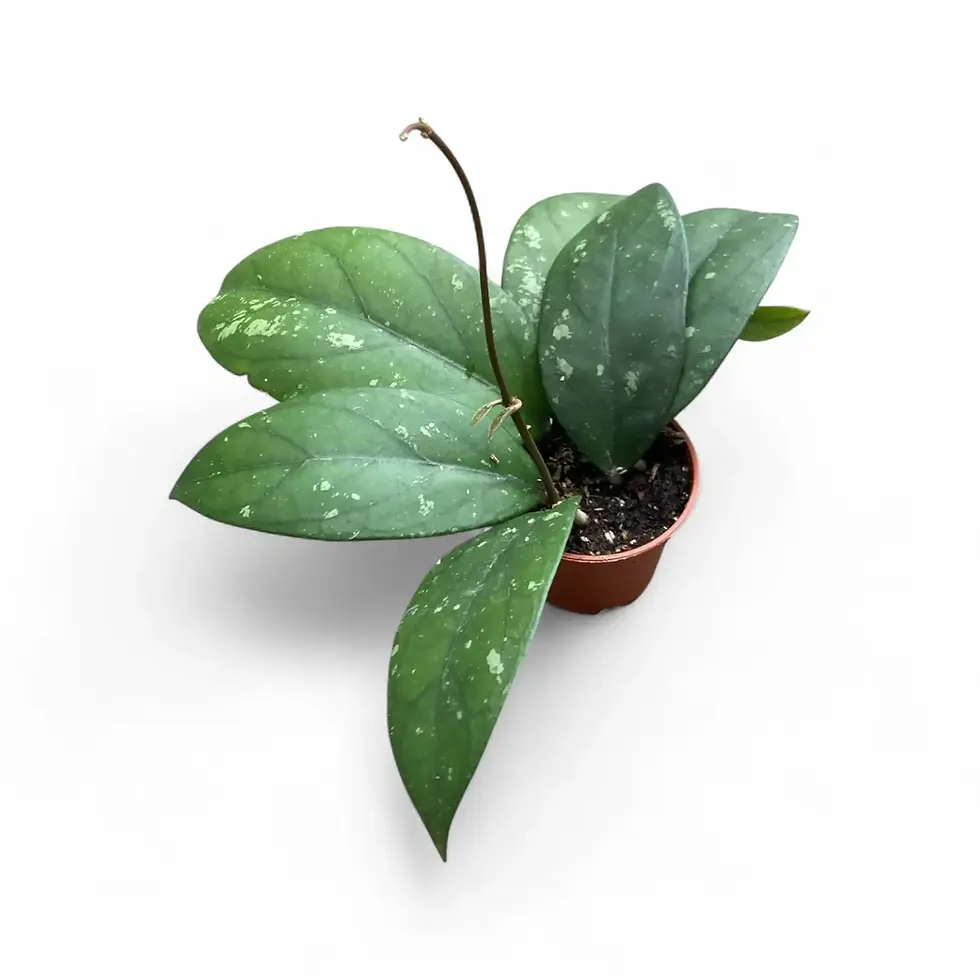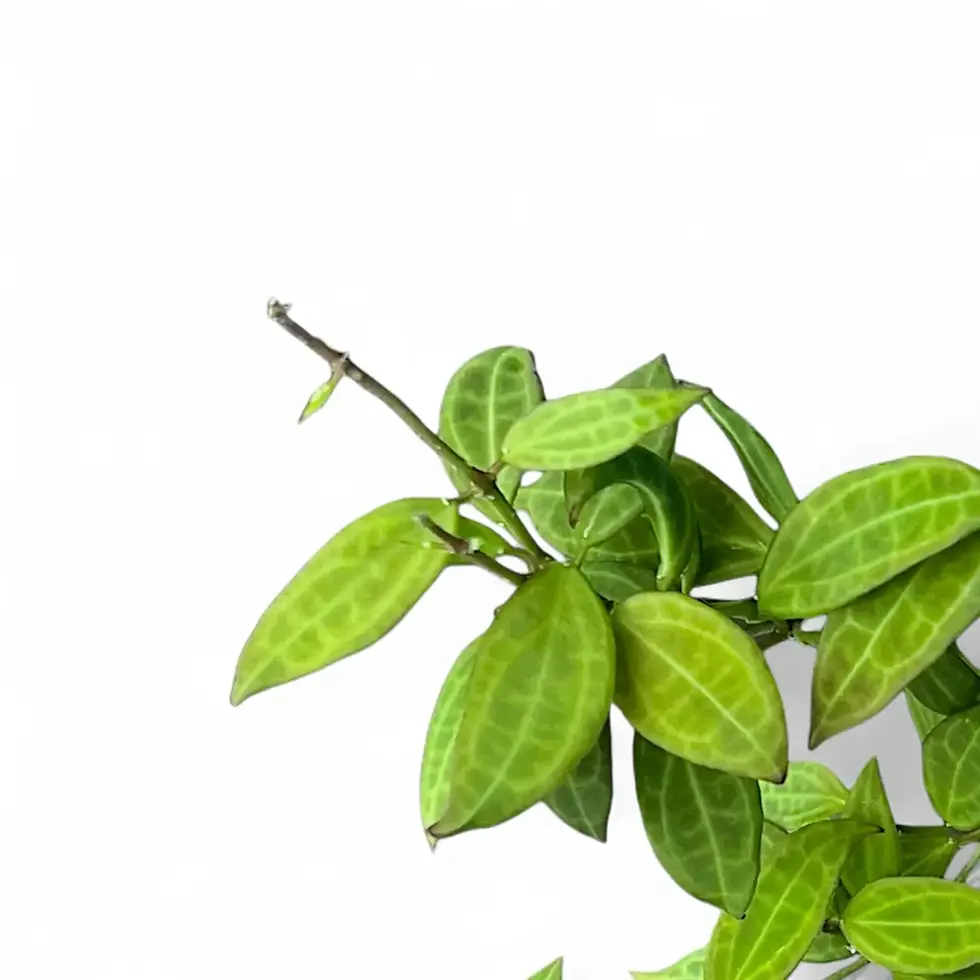Alocasia cucullata variegata – Growth Pattern, Leaf Traits & Care Tips
Alocasia cucullata variegata is a rare, compact foliage plant that combines the species’ classic hooded leaves with bold creamy-white marbling and sectoral splits. Each leaf is unique, displaying contrasting green and ivory tones that shift as the plant matures. Indoors, it forms a neat clump of upright stems topped with glossy, rippled blades, creating a living statement piece that feels sculptural and dynamic.
Visual Traits & Highlights
- Leaf pattern: Unpredictable marbling and creamy-white sectors over deep green
- Indoor size: Typically 60–100 cm in height and width
- Growth habit: Upright, clump-forming, short internodes (not leggy)
- Texture: Glossy, slightly rippled leaf surface with sturdy blades
- Impact: Each leaf is a one-of-a-kind design, making this plant a true collector’s piece
Natural Background & Growth Context
The parent species Alocasia cucullata originates from the shaded understories of Laos, Vietnam, and Southern China. It thrives in warm, humid conditions (18–27 °C) and loose, airy soils that stay moist but never soggy. Indoors, this variegated form retains a compact habit, producing basal clusters from a short rhizome. Like all Alocasias, it contains calcium oxalate crystals and is toxic if ingested.
Indoor Care Essentials
- Light: Bright, filtered light; avoid harsh direct sun that can scorch variegation
- Water: Keep soil lightly moist; allow top 2–3 cm to dry between waterings
- Humidity: Ideal range 60–80%; consider grouping plants or using a humidifier
- Temperature: 18–25 °C; never below 10 °C, and protect from drafts
- Soil mix: Chunky, fast-draining aroid blend with bark, perlite, and coco coir
- Repotting: Every 1–2 years, refreshing substrate and inspecting rhizomes
- Fertilizer: Balanced liquid feed every 3–4 waterings year-round
- Propagation: Divide rhizomes or separate basal offsets during repotting
- Hydroponics: Not ideal; prefers breathable soil with consistent moisture
- Pruning: Remove yellowing or damaged leaves at the base to encourage new growth
Troubleshooting & Quick Fixes
- Root rot: From waterlogged soil; trim affected roots and repot in airy mix
- Yellowing leaves: Usually inconsistent watering or root stress
- Crispy tips: Often from low humidity or mineral buildup; flush soil, raise humidity
- Pests: Watch for spider mites, thrips, or mealybugs; treat with neem or insecticidal soap
Additional Tips
Keep the plant in a stable position with consistent conditions. Mimicking its native habitat—filtered light, warmth, and moisture—ensures vibrant variegation and steady growth.
Etymology & Botanical Authority
The genus Alocasia comes from Greek “allos” (other) + “colocasia” (a related genus). The species epithet cucullata means “hooded,” referring to the curved leaf shape. Originally described as Arum cucullatum by João de Loureiro in 1790, it was later reassigned to Alocasia by George Don.
FAQs
How often does it produce new leaves?
Every 3–4 weeks in ideal conditions; slower in cool or dim environments.
Can lighting increase variegation?
No. Variegation is genetic; light only affects growth speed and overall plant health.
Is it suitable for terrariums?
No. It grows too large and needs airflow to avoid fungal issues.
Add Alocasia cucullata variegata to your collection today for a striking, rare foliage plant with dynamic color and refined form.
Alocasia cucullata variegata
Alocasia cucullata variegata comes in a ⌀ 9 cm pot and is approximately 25 cm tall
































